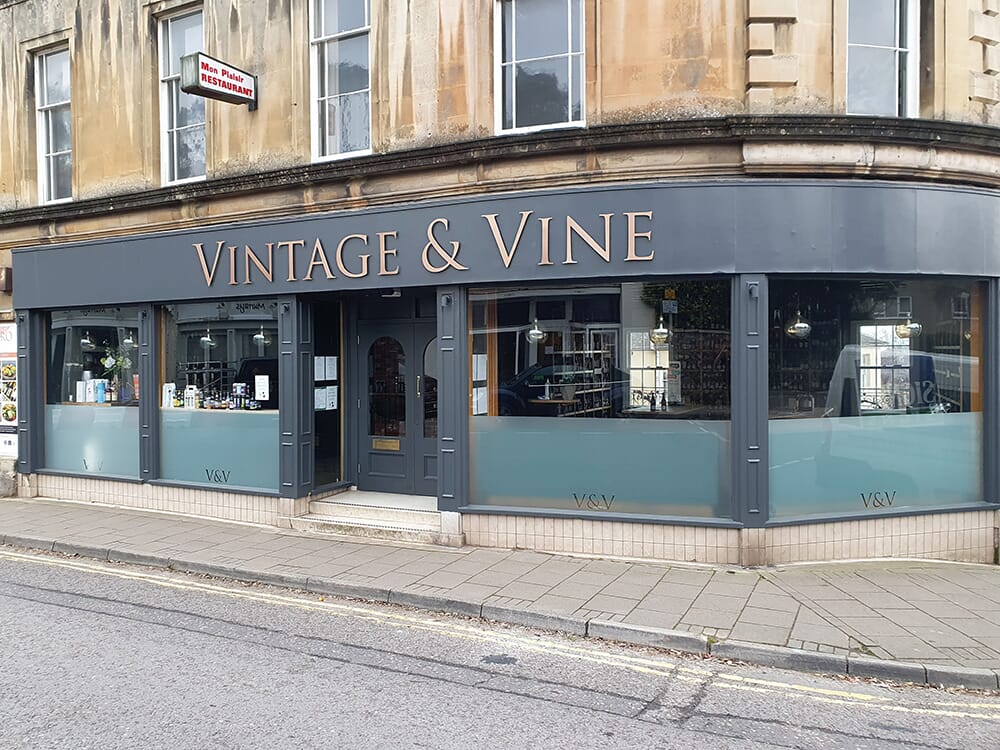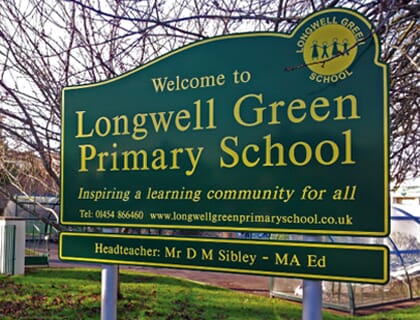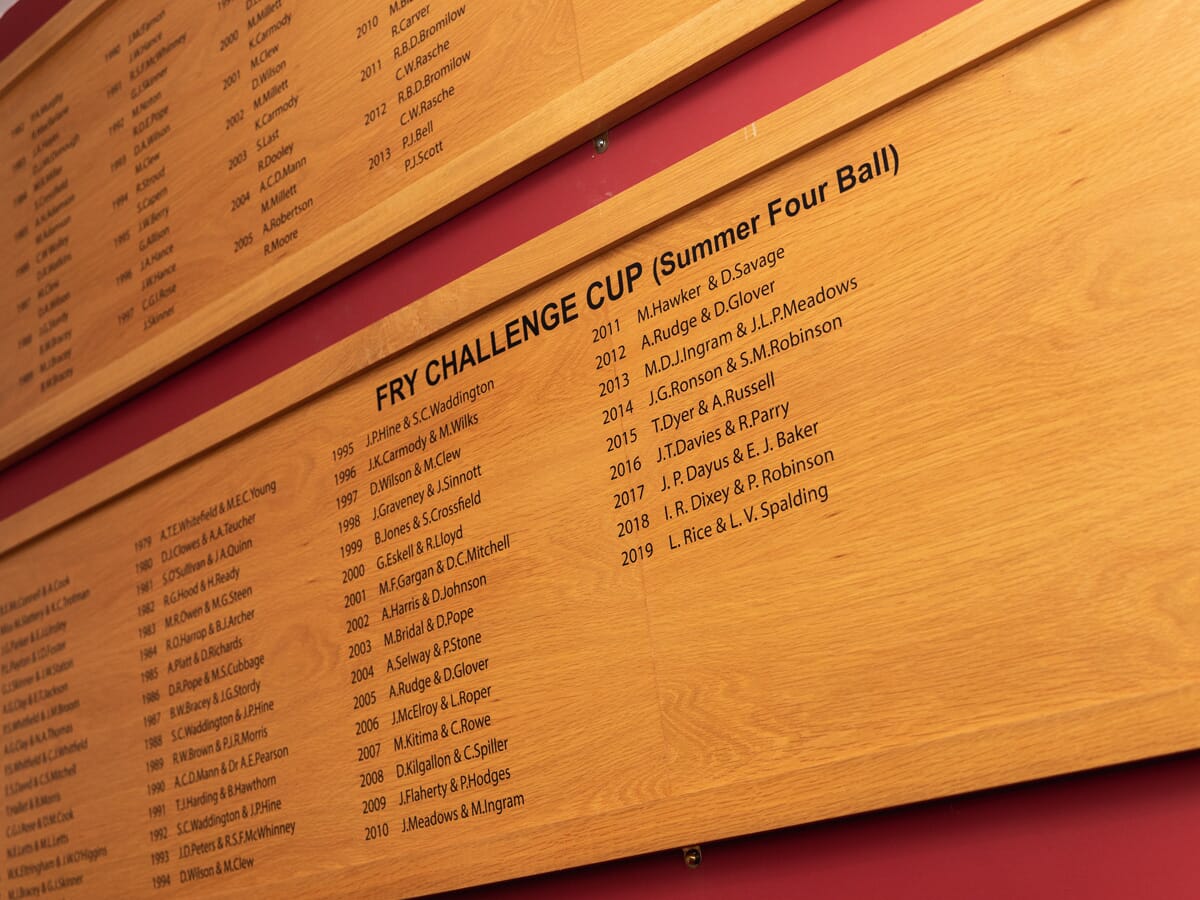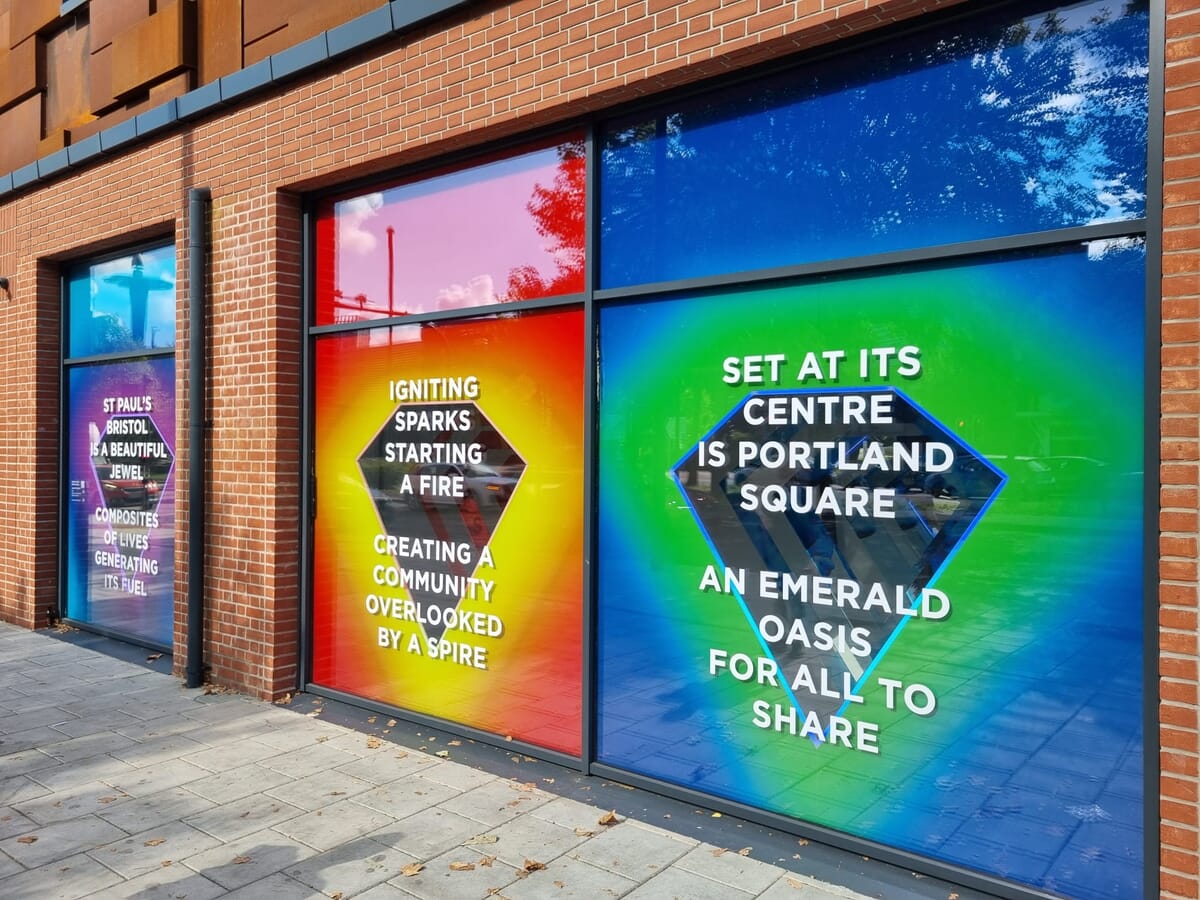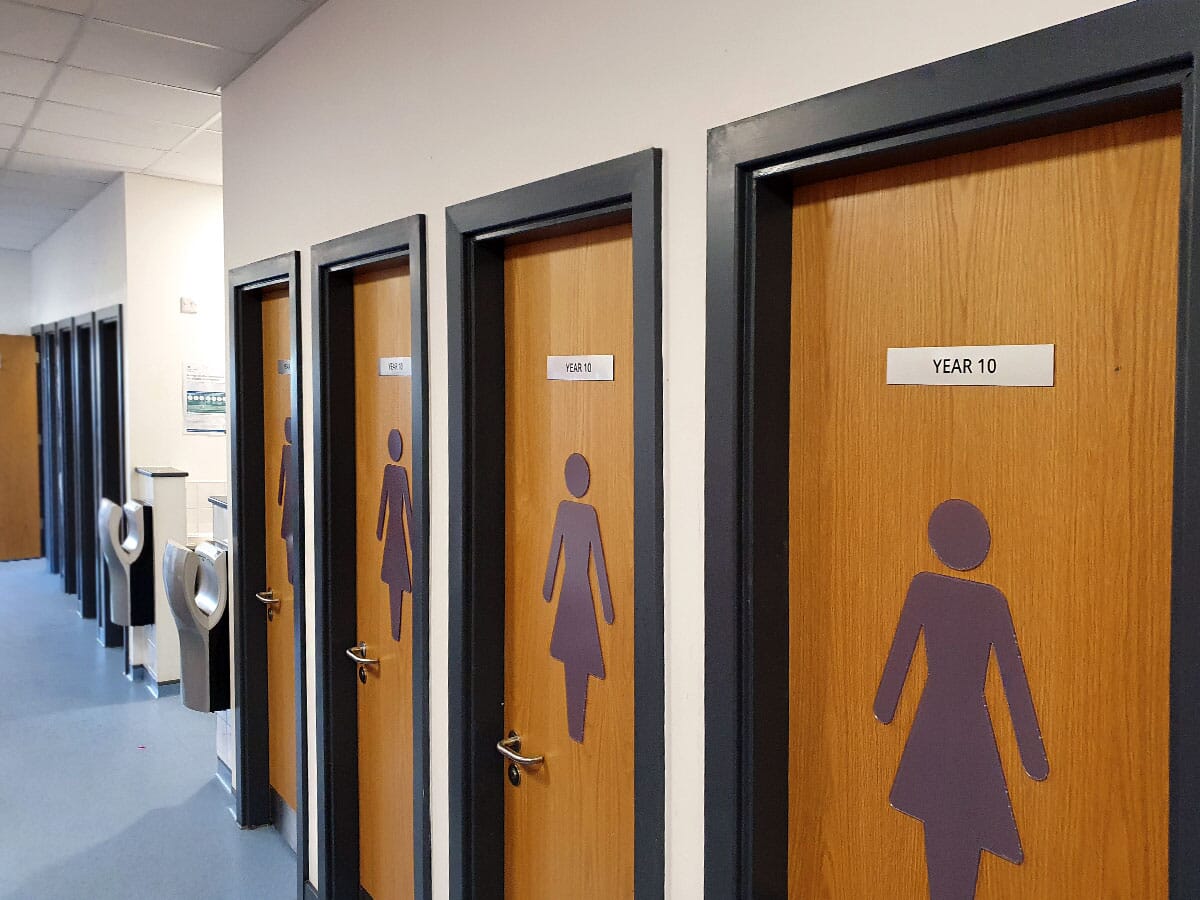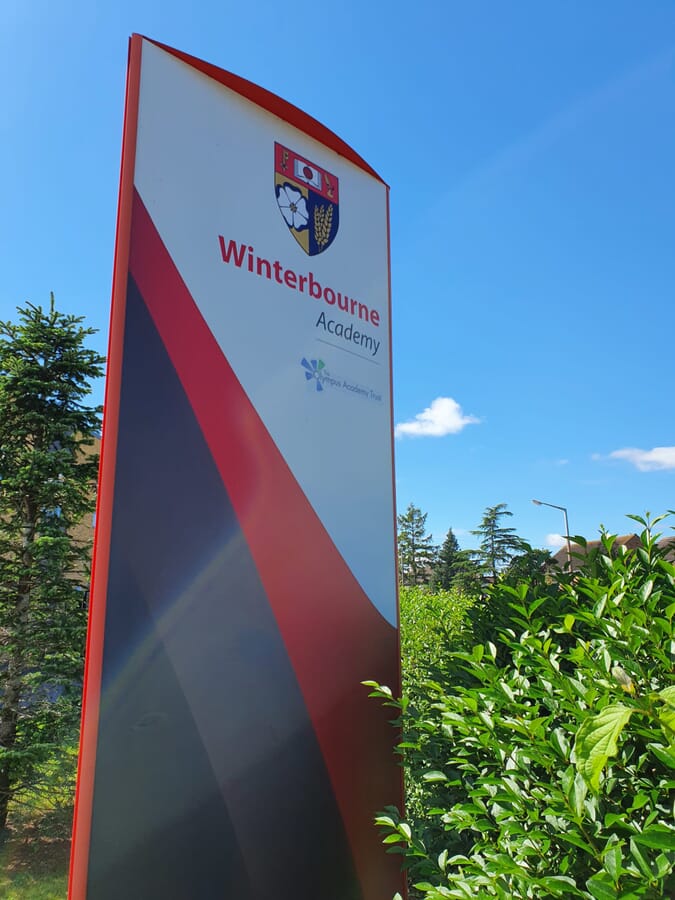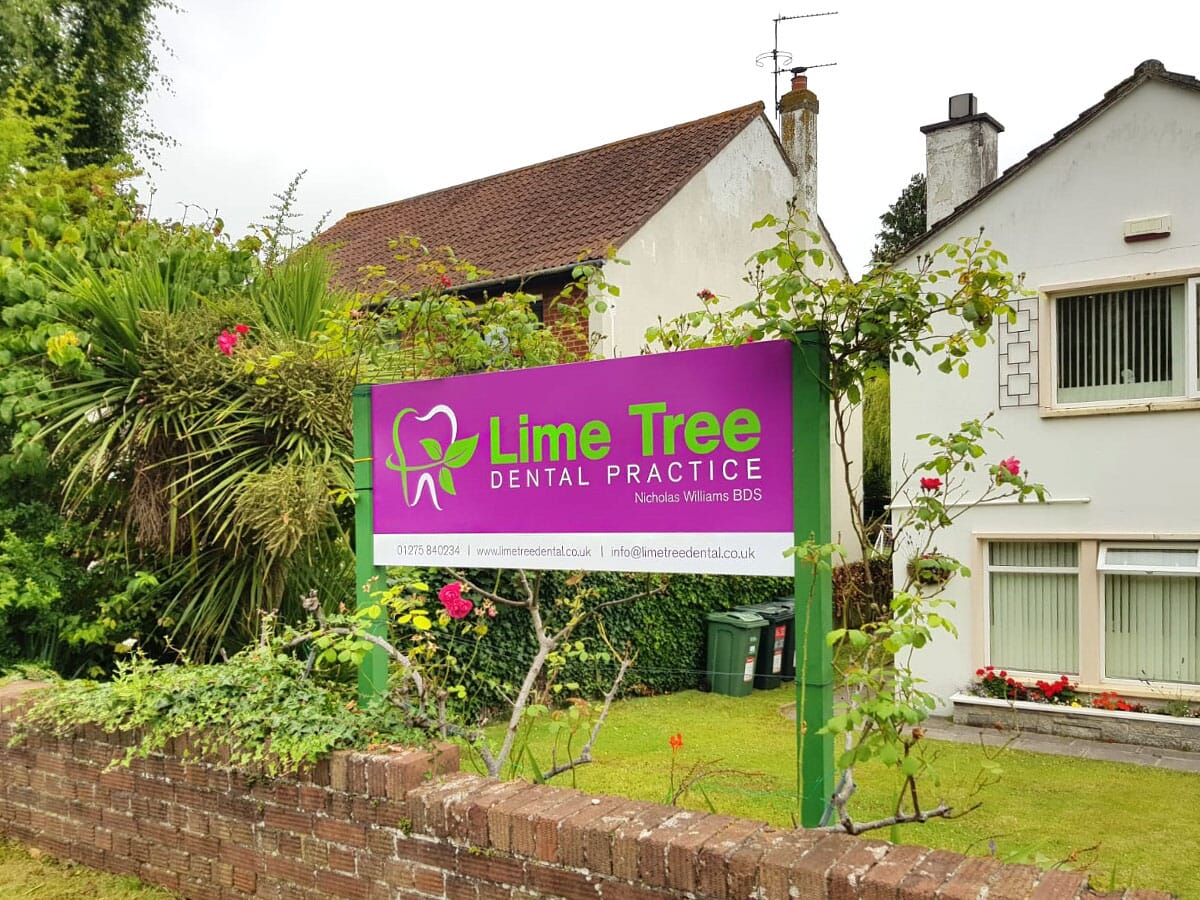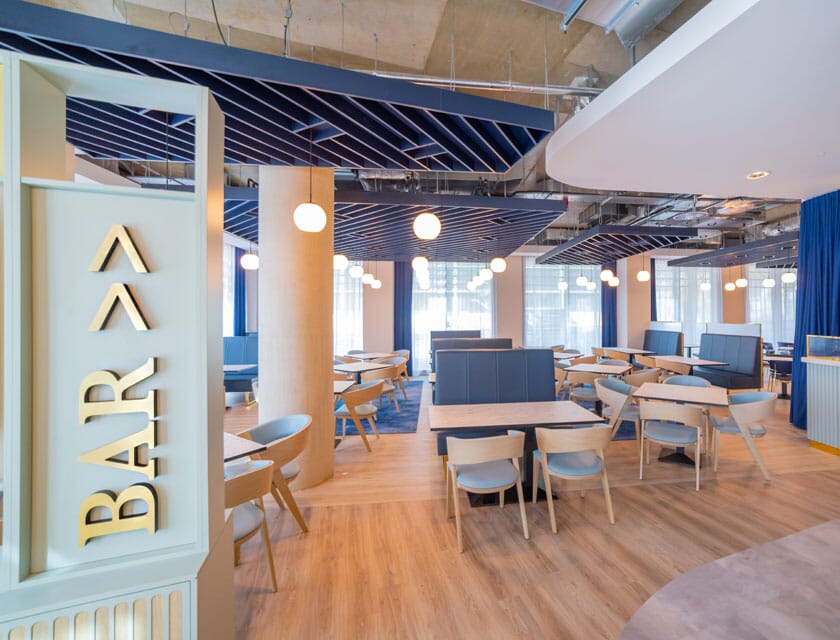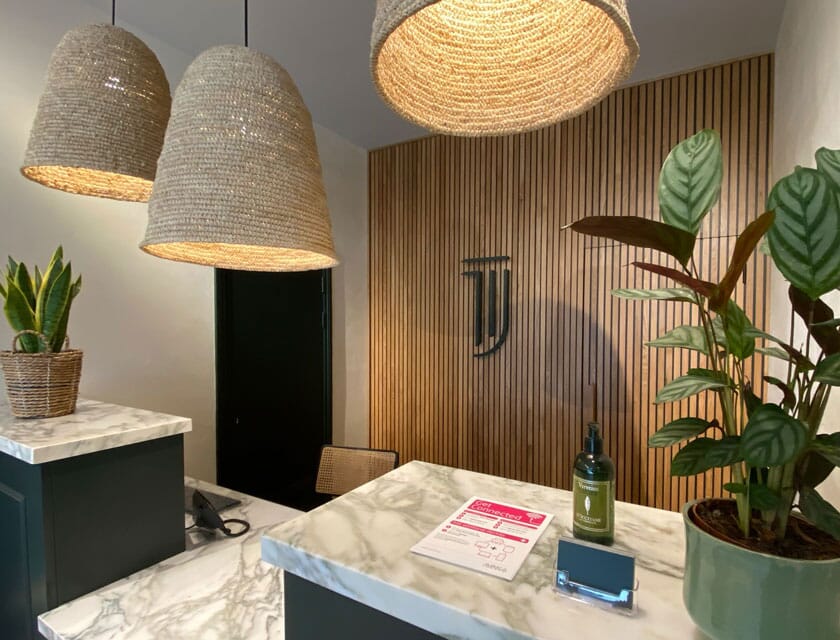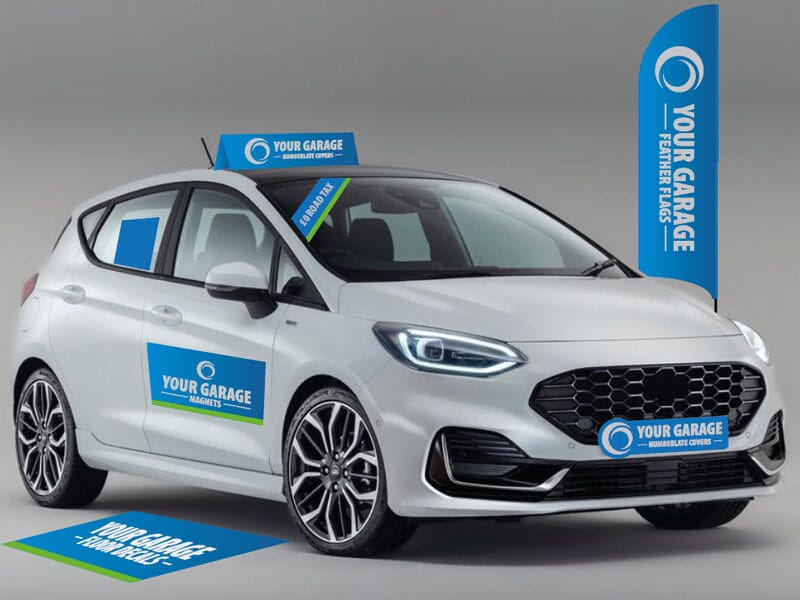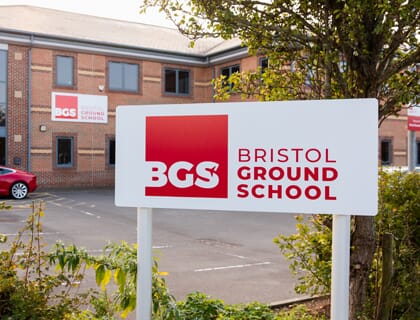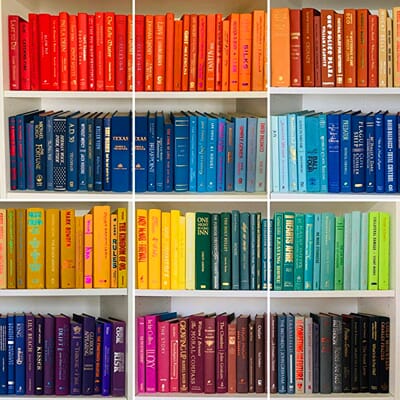Knowledge
Frequently Asked Questions
-
General Signs
-
Do I need permission for a sign?
Generally speaking… you wouldn’t normally need planning permission for a sign less than 1 m2 in size.
However we would always recommend talking to your local planning authority (LPA) before making any decisions. -
Do you offer site visits?
A: Yes, we do offer site visits, but it does depend on your location. We are based just outside of Bristol, with easy access to the M4 and M5, which allows us to cover a large area. However, depending on the distance and logistics, additional costs such as travel and accommodation may be required.
As each customer’s requirements are likely to be unique, we suggest getting in contact with us to discuss the specifics of your project. We will be happy to provide you with a quote and a detailed plan.
-
What areas do you cover?
As a shop sign maker we do a lot of work in our local areas Bristol, Bath, Gloucestershire, Taunton and Swindon.
We also complete works nationally throughout the UK. -
Can you help with the design work?
Yes, we have a dedicated design team that can assist with your designs. We can help you create a custom design that reflects your brand and stands out from the competition. We will work closely with you to understand your needs and preferences, and we will provide you with multiple design options to choose from. Our team of experts are experienced in creating a wide range of designs, and they will ensure that your shop sign is not only visually appealing but also meets all the necessary regulations and safety requirements.
However, if you have your own design team, we will work directly with them to give you a sign that you will be more than happy with. We understand that every business is unique, and we are committed to providing you with the best solution for your specific needs. We are happy to collaborate with your own design team to ensure that the final product is exactly what you want and that it meets all your requirements.
-
Colour references: CMYK, Pantone, RGB, RAL, what's the difference?
We will assume for the sake of this question that you know next to nothing about printing, sign making or colour references.
So grab that coffee, sit back and relax.
Everything you never wanted to know about colour, but suddenly find yourself needing to know is below!
If you’ rather skip through the technical and get down to the “what do I need to send you?”, then the answer is Pantone references are great and will get you the closest match, CMYK references are a close 2nd but are less accurate due to reasons explained below.What makes or changes a colour?
1. Colour References.
There are many different ways of specifiying a particular colour. There are CMYK and RAL and Pantone and RGB colour references for instance.
Each of these types of colour reference are predominantly used by a particular industry. Some of which are useful for sign making, some of which are not.2. Material Types.
The substrate you’re printing onto will have an effect on the final colour you see. For example, printing onto a smooth sheet of plastic will give a more solid colour than printing that same colour onto a cotton sheet.3. Sources of Light.
When colour matching, you should view the colours in natural light. All of our eco friendly lighting at Signet Signs Ltd produces ‘natural light’ to enable us to colour match indoors in perfect conditions.
The reason you colour match outdoors is to get away from the internal lighting altering your perception of colour. For example, fluorescent tubes emit a large amount of yellow which dramatically alters colours.
Likewise, a colour viewed on your phone will look much brighter as it’s backlit than viewing it on a flat sheet of paper.The Different Colour Reference Types (Colour Models)
Pantones – A widely accept colour range used in a variety of industries.
Pantone LLC is a company which is best known for its Pantone Matching System (PMS). Their colour references are used extensively in print, graphic design, fashion and product design.
For a ‘not small’ amount of money you can purchase a pantone reference swatch. This allows you to see each colour. So when someone says I want that sign to be pantone 269. We can look at our colour reference swatch , find pantone 269 and ensure the print matches that colour. Anyone, anywhere in the world, with a pantone reference swatch will be able to work towards that exact sample colour and this is why pantones are so very useful in our industry. We know the exact colour as we have a swatch showing them all. All we need to know is the Pantone reference number you need us to match.CMYK – Used in printing. (Example: 10/99/20/21).
Also know as four colour process printing, is a subtractive model and is used to specify ink volumes. The C M Y and K refer to the Cyan , Magenta, Yellow and Key (Black) inks. The larger the number the more ink is used.
So a reference of 5/5/5/5 will be a very light grey, whereas a reference of 100/100/100/100 will be darkest black.
These references are very applicable to sign making but one thing should be borne in mind, and that is… every single manufacturers inks will be slightly different. Likewise, every single printer will print slightly differently too.
So if you printed a sheet of paper with 5/5/5/5 on one machine using Example Inks Ltd, it is unlikely to be an exact colour match printed on another different machine using Dummy Inks Ltd.
Unfortunately this is just the way things are but CMYK colour references will get a close match, albeit it may not be an exact match to your existing printed items due to the above.RAL – Used for powder coating & varnishing.
RAL is a colour model used throughout Europe mainly in the powder coating & varnishing industries. RAL is a useful reference in the signage industry as we have RAL colour reference charts.
We then match a Pantone to the RAL reference and print the pantone colour.RGB – Used on digital display screens.
The RGB colour model is an additive colour model in which red, green and blue light are added together to create a vast array of colours.
The main use for the RGB colour model is for use in digital display screens, like televisions, mobile phone screens and the like. As with CMYK, there are a number of influences which can alter the way that colour is perceived by the viewer.
For example, take your computer monitor screen and lets assume it showing a bright red square. Now adjust your monitors brightness, contrast, vibrancy, saturation and so on… each time you adjust the settings for your monitor you’ll be subtly changing the colour on your screen.
This is why it’s not a good idea to rely on digital photographs for colour matching. There are far too many outside influences which can impact on the colour.
Therefore it is not a reference which typically applies to the print industry and it’s a reason no one should use a digital image / screen for referencing a colour.Hex – (Web Colours) – Used on websites.
As per RGB, hex references are not relevant to the print industry.We hope this proved useful, but if you’ve skipped to the bottom in the hope of finding a quick summary then…
Please send us Pantones, CMYK or RAL references. They’re the most useful to us, in that order.Any questions at all, please do not hesitate to contact us.
-
What materials are used for signs?
Rigid Plastic.
Thickness: 1.5mm only
Sheet SIze: 1220 x 610mm
Price Guide: Low cost
Notes: Despite it’s name, it is quite flexible. Rigid Plastic, aka HIPS (High Impact Polystyrene) is a low cost , dense plastic sheet which is used for signage which either needs to meet budgetry requirements or is simply temporary.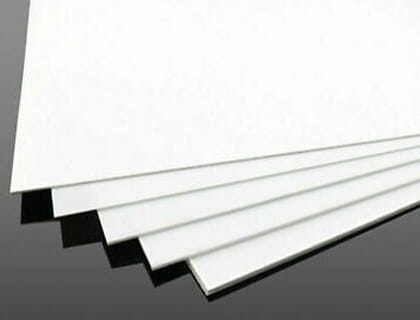
Foamex.
Thickness: 3mm, 5mm, 10mm, 19mm
Sheet SIze: 2440 x 1220mm & 3050 x 1500mm
Price Guide: Low – medium cost.
Notes: Light weight material. A cheaper alterative to ACM (see below) in some instances.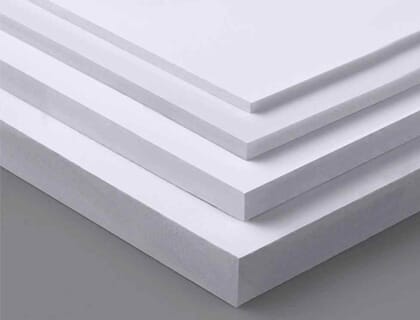
Aluminium Composite Material (ACM)
Thickness: 3mm
Sheet SIze: 2440 x 1220mm & 3050 x 1500mm
Price Guide: Medium.
Notes: A superb durable material which comes in a range of standard colours & finishes including metallics. Recycled plastic core and thin sheet of aluminium to each face make it lightweight, durable and with little scrap value. By far the most widely used sign making material for outdoor signage.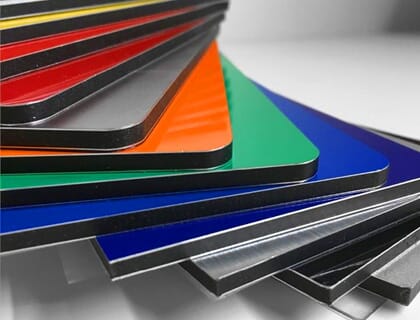
Acrylic
Thickness: 1, 3, 5, 8, 10, 20mm
Sheet SIze: 1220 x 2440, 2000 x 3000mm
Price Guide: High
Notes: Excellent material for situations where water resistance or asethetics are key. It’s availability in a wide range of standard colours lends itself to flat cut lettering, whereas the clear acrylic is perfect for high quality reception signs.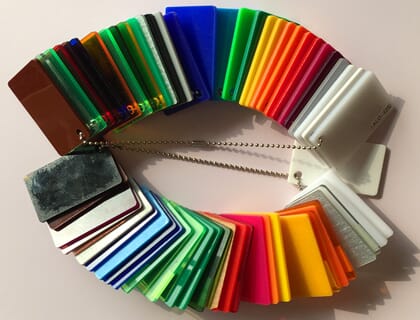
PVC (Vinyl)
Thickness: <1mm
Roll Widths: Various.
Price Guide: Low.
Notes: Available in a huge range of colours and finishes. Everything from standard reds, blues, greens etc to etched glass and mirror effects. In recent years there are even some high quality wood effect finishes available. As diverse the range of finishes and colours it is also true that the quality of some vinyls range just as much. We use 3M, Metamark and Avery vinyls as we believe in offerring quality products we have confidence in.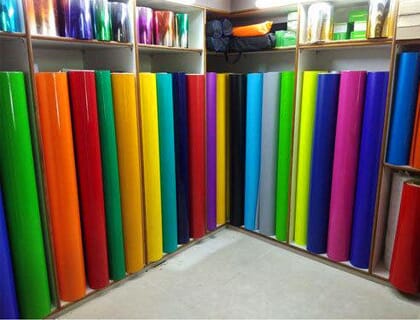
Correx
Thickness: 4mm, 6mm, 10mm
Sheet SIze: 2440 x 1220mm & 3050 x 1500mm
Price Guide: Very low.
Notes: Fluted plastic sheets, available in a range of colours. Typically this signage is produced using white correx sheets with printed vinyl applied to the face. Used for a lot of temporary / budget signage.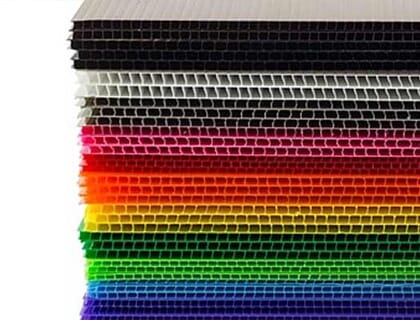
Correx-Sign-Making-Material -
What's the next step?
We will assume for the sake of this question that you’ve either emailed us or spoken to us on the phone and we now have a reasonable understanding of your requirements.
From this point on the process will normally follow the list below.1. We provide a quote to you.
We will always provide a quote, but we may not provide a drawing / proof simply due to the volume of enquiries we receive every day. Design proofs can sometimes take a considerable amount of time to draw so we try to only spend time on design work where necessary at this stage.
Once you are happy with the quote, we move onto the next step.2. The Order Stage
At this point you’ve let us know you’re happy with the price and wish to proceed. So… Thank you! If we’ve not already done so, we now spend time preparing the design proof/s. Each proof will show you how the sign will look along with it’s specifications. We show quantity, material, size, fixings, colour references and any additional notes so that you’ve got an accurate technical drawing showing everything you need to know.
We work with you to ensure the proof is perfect and move onto the next stage when we have received written / verbal approval of the proof.3. Manufacturing Stage.
We now have your approval to proceed with manufacture and so we start work! Materials are ordered, installation schedules planned and graphics printed and cut.
How long this stage takes is entirely dependant upon the complexity of the sign/s.
If we are installing, then when we’re close to completing manufacture we will call you to confirm the installation date is still convenient and that nothing has changed.
We then move to Stage 4a or Stage 4b depending on whether you require installation or not.4a. Despatch and Delivery.
We despatch all of our orders through various national couriers. Once dispatched, your order will usually arrive within 3 working days.4b. Installation.
It is very helpful to meet you on site at the start of the installation. This allows us both an opportunity to review the agreed works and to assess any changes which have suddenly come to light on site.
The vast majority of our work is completed during normal working hours, whilst we do have the capacity to accomodate bespoke requests.
Members of the installation teams are DBS checked and CSCS, IPAF & PASMA trained so you can be confident in their skill and experience.5. After Sales Service.
We pride ourselves on our reputation and we are always just a phone call or email away should you have any issues / questions regarding your signage no matter how long ago it was installed.
-
Do I need permission for a sign?
-
Honours Boards
-
How do you update an honours board.
We supply lettering for honours boards on a backing sheet and the pre-spaced letters are covered with an application tape.
You simply peel off the application tape, which takes the letters off the backing sheet, and then apply them to the board.
A video is worth a thousand words, so please see our ‘how to apply honours board lettering‘ video for more information. -
How do you make honours boards?
How we make wooden honours boards
For our wooden honours boards, we use the latest CNC & routing machinery and computer guided cutting tables to ensure that we make your honours board accurately.
They’re then assembled, checked, and sent to a specialist company which applies a lacquer to seal the wood.
Whilst the lacquer is being applied, we cut the vinyl lettering and logos to go onto the board so we’re ready for when the board is back with us.
Upon return to ourselves we then apply cut vinyl lettering & any logos.The board goes through a final quality control check before being placed into packaging which is designed to protect the board.
It’s then either sent out via a national courier or delivered by ourselves direct to you.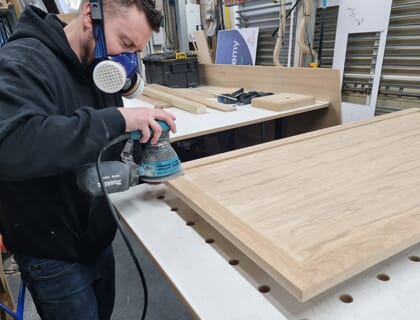
Honours boards being manufactured. How we make acrylic honours boards.
The acrylic honours boards are a little simpler to manufacture than the wooden ones.
Firstly a sheet of acrylic is cut to the size of the honours board and the drill holes cut. The edges of the board are now polished to a glass like finish.
If the board requires an etched film background, we then apply this in a dust free controlled environment. This ensures no tiny bits of dirt are trapped between the film and the back of the board.
Finally the lettering and any printed logos are cut using computer controlled plotters, and then applied to the face of the board.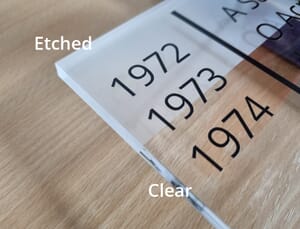
Etched acrylic vs clear acrylic honours board -
What font is best for honours boards?
Short answer: The one which you like and which is also easily read by persons. A sans serif font is preferred. Like Open Sans or Myriad Pro.
Longer answer: Typically we use one of the following font families, Open Sans, Myrid Pro, Century Gothic, Times New Roman, Arial or Garamond. Those fonts tend to cover most requirements. However, we hold 40,000+ fonts on our system and thus can more than likely match your font requirements if you need something specific.
We would suggest fonts like Open Sans or Myrid Pro which are clean and easy to read. Fiddly fonts / script fonts / serif fonts and so on, might sound like a good idea but in truth they make the board harder to read. -
Do you make modern honours boards?
We certainly do. This style of honours board is typically made from acrylic, which gives a glass like look.
The clear acrylic can have an etched glass film applied to the background (looks like someone has rubbed sand into the glass) which gives the board a nice smooth background for the text.
The text is mounted onto the face of the panel which allows for the boards to be updated by the club / school / organisation themselves.More information on modern honours boards can be found here.
-
How much do honours boards cost?
The price of an honours board will depend upon it’s size and complexity.
We have an honours board price list on our dedicated honours board page.
-
How do you update an honours board.
-
Shop Signs
-
Do I need permission for a sign?
Generally speaking… you wouldn’t normally need planning permission for a sign less than 1 m2 in size.
However we would always recommend talking to your local planning authority (LPA) before making any decisions. -
What are the different types of shop signs.
There are many types of shop sign. From large illuminated flex face signs, the likes of which you would see on multi national super stores, to printed panel signs which are typically perfect for a start up company.
We have a wed page dedicated to the various shop signs here. Shop Signs -
Do you offer site visits?
A: Yes, we do offer site visits, but it does depend on your location. We are based just outside of Bristol, with easy access to the M4 and M5, which allows us to cover a large area. However, depending on the distance and logistics, additional costs such as travel and accommodation may be required.
As each customer’s requirements are likely to be unique, we suggest getting in contact with us to discuss the specifics of your project. We will be happy to provide you with a quote and a detailed plan.
-
What areas do you cover?
As a shop sign maker we do a lot of work in our local areas Bristol, Bath, Gloucestershire, Taunton and Swindon.
We also complete works nationally throughout the UK. -
How much does a shop sign cost?
The cost of a shop sign can vary greatly depending on the type of sign you are looking for.
Shop Sign Light Box are signs that have a light source behind the sign face, making it visible even in the dark. These signs can be costly due to the lighting and electrical components required. These signs can range from a few hundred pounds to several thousand pounds, depending on the size and complexity of the design, materials used, and the location of the sign.
Price Guide: £1200 – £2000+
Flat Panel Signage is a type of sign that is made up of a flat surface, usually made of metal or composite materials with graphics or text applied to the surface. These signs are typically less expensive than illuminated signs, but the cost will still depend on the size and complexity of the design.
Price Guide: £500 – £1000+
Bespoke Cut Letters are a custom-made sign option that can be made from a variety of materials such as acrylic or metal. The letters can be cut to any shape and size, and the cost of this type of sign will depend on the size, materials and complexity of the design, and the location of the sign. These signs can range from a few hundred pounds to several thousand pounds.
Price Guide £550+
Pencil Light Illumination is a sleek and efficient way to illuminate your shop sign without the bulkiness of a lightbox. This type of illumination uses LEDs within a tube that is mounted above or below the sign, shining the light back and across the face of the sign, providing a focused and effective illumination while avoiding wasting light on unnecessary areas. The pencil light illumination is available in different lengths to fit any width of a sign.
Price Guide: £380+
Illuminated shop signs are an excellent way to attract customers and promote your business. They come in a variety of styles and can be customized to fit your budget and needs. Illuminated shop signs are particularly effective as they can be seen from a distance, making your business stand out from the competition. The cost of an illuminated shop sign will vary depending on several factors such as the size, design, and location of the sign, however, the benefits of having an illuminated shop sign far outweigh the costs as they can generate new customers and boost sales.
Price Guide: £800+
-
Can you help with the design work?
Yes, we have a dedicated design team that can assist with your designs. We can help you create a custom design that reflects your brand and stands out from the competition. We will work closely with you to understand your needs and preferences, and we will provide you with multiple design options to choose from. Our team of experts are experienced in creating a wide range of designs, and they will ensure that your shop sign is not only visually appealing but also meets all the necessary regulations and safety requirements.
However, if you have your own design team, we will work directly with them to give you a sign that you will be more than happy with. We understand that every business is unique, and we are committed to providing you with the best solution for your specific needs. We are happy to collaborate with your own design team to ensure that the final product is exactly what you want and that it meets all your requirements.
-
What materials are used for signs?
Rigid Plastic.
Thickness: 1.5mm only
Sheet SIze: 1220 x 610mm
Price Guide: Low cost
Notes: Despite it’s name, it is quite flexible. Rigid Plastic, aka HIPS (High Impact Polystyrene) is a low cost , dense plastic sheet which is used for signage which either needs to meet budgetry requirements or is simply temporary.
Foamex.
Thickness: 3mm, 5mm, 10mm, 19mm
Sheet SIze: 2440 x 1220mm & 3050 x 1500mm
Price Guide: Low – medium cost.
Notes: Light weight material. A cheaper alterative to ACM (see below) in some instances.
Aluminium Composite Material (ACM)
Thickness: 3mm
Sheet SIze: 2440 x 1220mm & 3050 x 1500mm
Price Guide: Medium.
Notes: A superb durable material which comes in a range of standard colours & finishes including metallics. Recycled plastic core and thin sheet of aluminium to each face make it lightweight, durable and with little scrap value. By far the most widely used sign making material for outdoor signage.
Acrylic
Thickness: 1, 3, 5, 8, 10, 20mm
Sheet SIze: 1220 x 2440, 2000 x 3000mm
Price Guide: High
Notes: Excellent material for situations where water resistance or asethetics are key. It’s availability in a wide range of standard colours lends itself to flat cut lettering, whereas the clear acrylic is perfect for high quality reception signs.
PVC (Vinyl)
Thickness: <1mm
Roll Widths: Various.
Price Guide: Low.
Notes: Available in a huge range of colours and finishes. Everything from standard reds, blues, greens etc to etched glass and mirror effects. In recent years there are even some high quality wood effect finishes available. As diverse the range of finishes and colours it is also true that the quality of some vinyls range just as much. We use 3M, Metamark and Avery vinyls as we believe in offerring quality products we have confidence in.
Correx
Thickness: 4mm, 6mm, 10mm
Sheet SIze: 2440 x 1220mm & 3050 x 1500mm
Price Guide: Very low.
Notes: Fluted plastic sheets, available in a range of colours. Typically this signage is produced using white correx sheets with printed vinyl applied to the face. Used for a lot of temporary / budget signage.
Correx-Sign-Making-Material -
What's the next step?
We will assume for the sake of this question that you’ve either emailed us or spoken to us on the phone and we now have a reasonable understanding of your requirements.
From this point on the process will normally follow the list below.1. We provide a quote to you.
We will always provide a quote, but we may not provide a drawing / proof simply due to the volume of enquiries we receive every day. Design proofs can sometimes take a considerable amount of time to draw so we try to only spend time on design work where necessary at this stage.
Once you are happy with the quote, we move onto the next step.2. The Order Stage
At this point you’ve let us know you’re happy with the price and wish to proceed. So… Thank you! If we’ve not already done so, we now spend time preparing the design proof/s. Each proof will show you how the sign will look along with it’s specifications. We show quantity, material, size, fixings, colour references and any additional notes so that you’ve got an accurate technical drawing showing everything you need to know.
We work with you to ensure the proof is perfect and move onto the next stage when we have received written / verbal approval of the proof.3. Manufacturing Stage.
We now have your approval to proceed with manufacture and so we start work! Materials are ordered, installation schedules planned and graphics printed and cut.
How long this stage takes is entirely dependant upon the complexity of the sign/s.
If we are installing, then when we’re close to completing manufacture we will call you to confirm the installation date is still convenient and that nothing has changed.
We then move to Stage 4a or Stage 4b depending on whether you require installation or not.4a. Despatch and Delivery.
We despatch all of our orders through various national couriers. Once dispatched, your order will usually arrive within 3 working days.4b. Installation.
It is very helpful to meet you on site at the start of the installation. This allows us both an opportunity to review the agreed works and to assess any changes which have suddenly come to light on site.
The vast majority of our work is completed during normal working hours, whilst we do have the capacity to accomodate bespoke requests.
Members of the installation teams are DBS checked and CSCS, IPAF & PASMA trained so you can be confident in their skill and experience.5. After Sales Service.
We pride ourselves on our reputation and we are always just a phone call or email away should you have any issues / questions regarding your signage no matter how long ago it was installed.
-
Do I need permission for a sign?
